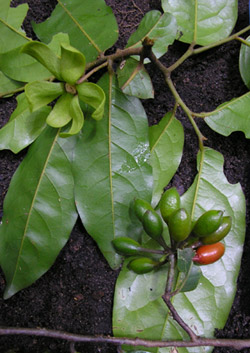Not as dead as a dodo

The top ten species surviving because of zoos
If only zoos had existed in the time of the dodo, it may not be extinct today.
According to Dr Andrew Marshall, from the University of York’s Environment Department and Flamingo Land Theme Park and Zoo, good zoos are now powerful forces for conservation and some of the world’s most extraordinary species would not be surviving without them.
Dr Marshall has played a key role in creating a list of the top ten species most reliant on zoos on behalf of the British and Irish Association for Zoos and Aquariums (BIAZA), which promotes the value of good zoos and aquariums.
we hope our final shortlist will draw attention to just how important the work of zoos is
Dr Andrew Marshall
Animals on the very brink of extinction including a leopard, lemur and tortoise, have all made it into the top ten, highlighting how zoos are safeguarding the future of our planet’s wildlife and their habitats.
The list includes the Scimitar-horned oryx, now extinct in the wild, but thriving at Flamingo Land, as well Verdcourt’s polyalthia tree, an endangered plant from Tanzania, also found at the North Yorkshire zoo.
Dr Marshall, a member of BIAZA’s Field Programmes Committee, who co-ordinated the compilation of the list with input from conservation experts based at BIAZA zoos, said: “This list highlights ten prevailing examples of how zoos are working to save these and many other species from extinction. Without the valuable conservation and breeding work of many of our member zoos and aquariums, many ‘at risk’ species such as these may be lost to extinction forever.”
 Dr Marshall leads the CIRCLE institute – Centre for the Integration of Research, Conservation and Learning – based at Flamingo Land Theme Park and Zoo. Jointly funded by the University of York and Flamingo Land, the institute is playing an important role in protecting habitats and species both locally and internationally.
Dr Marshall leads the CIRCLE institute – Centre for the Integration of Research, Conservation and Learning – based at Flamingo Land Theme Park and Zoo. Jointly funded by the University of York and Flamingo Land, the institute is playing an important role in protecting habitats and species both locally and internationally.
He said: “Drawing up the shortlist was not straightforward because there were hundreds of zoo-funded conservation projects to choose from; however we put together strict criteria and we hope our final shortlist will draw attention to just how important the work of zoos is.”
The criteria for selecting the top ten included choosing species associated with ongoing field initiatives by zoos. Particular importance was given to initiatives which included a management role, rather than just providing funds. Species chosen are currently listed as Endangered, Critically Endangered or Extinct in the Wild on the International Union for Conservation of Nature’s (IUCN) Red List. Priority was also given to species conservation projects that include habitat, education and/or livelihood development.
Dr Marshall said: “The top ten list of species most reliant on zoos underlines the importance of zoos not only in conservation breeding for reserve populations and reintroductions, but in the role they play in conservation in the wild from fund-raising to research, education and support for local communities, as well as wildlife habitats.”
BIAZA’s top ten species most reliant on zoos are:
- Mountain chicken – one of the world’s largest frog species and critically endangered.
- White-clawed crayfish – around 95% of the population of Britain’s only native freshwater crayfish have been lost.
- Blue-crowned laughing thrush – only 250 mature birds of this Chinese species left in the wild.
- Amur leopard – fewer than 45 of these big cats left in the wild.
- Potosi pupfish – this freshwater fish is extinct in the wild.
- Partula snail – twelve species of Partula snail are extinct in the wild.
- Verdcourt's polyalthia tree – this critically endangered species has only been found in three locations in the Kilombero valley in Tanzania.
- Blue-eyed black lemur – this lemur is critically endangered due to large scale habitat loss and hunting.
- Ploughshare tortoise – one of the most sought after tortoises on the illegal pet trade market.
- Scimitar-horned oryx – extinct in the wild and dependent on conservation breeding.
Further information
Photo credits: James Godwin (Scimitar-horned oryx), Andrew R Marshall (Verdcourt's polyalthia tree) and Marwell Wildlife (homepage image of Scimitar-horned oryx)
